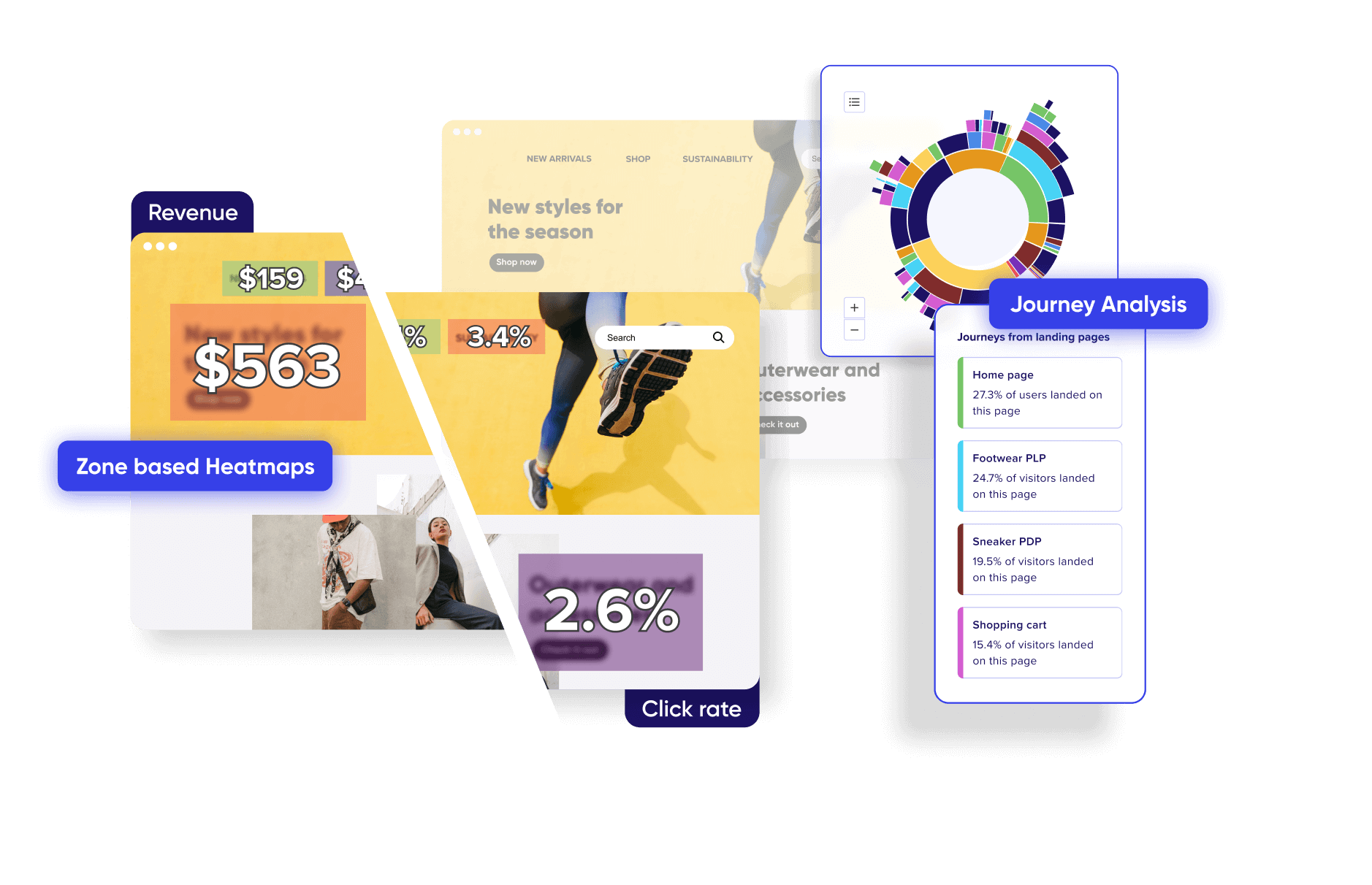
Know what drives engagement and abandonment on your sites and mobile apps.

Customer Journey Visualization is a strategic component of digital marketing strategy, focusing on customer experience mapping. This approach provides a comprehensive view of customer interaction with a brand, from the first contact through engagement to a long-term relationship.
It’s a critical aspect of customer relationship management (CRM), identifying potential areas for improvement and enhancing the overall customer experience. The primary objective of Customer Journey Visualization is to offer businesses a deep understanding of customer behavior. It helps identify customer touchpoints and the conversion path customers take to reach a purchase decision.
This information is invaluable in designing effective marketing strategies, improving customer service, and enhancing product or service quality. Customer Journey Visualization goes beyond mapping customer interaction with a brand. It involves a thorough purchase behavior analysis, exploring the emotions and motivations that drive customer behavior.
By understanding these factors, businesses can customize their offerings to meet customer needs and expectations, thereby increasing satisfaction and loyalty.
Customer Journey Visualization is a graphical representation or a user journey map of the steps a customer takes when interacting with a brand. It offers a visual narrative of the customer’s experience, from the first point of contact, through the process of engagement, to the final purchase and beyond. It aids businesses in understanding the customer’s perspective and identifying areas where they can enhance the customer experience. The visualization process involves mapping out each customer touchpoint where the customer interacts with the brand.
These touchpoints could include various channels such as websites, social media platforms, email, or physical stores. The journey also includes different stages the customer goes through, such as awareness, consideration, purchase, and retention, essentially forming a sales funnel diagram.
Customer Journey Visualization isn’t a one-size-fits-all approach.
It varies from business to business and even from customer to customer, based on their unique needs and preferences. Therefore, it’s essential for businesses to continually update and refine their user journey maps to reflect changing customer behavior and market trends.
Know what drives engagement and abandonment on your sites and mobile apps.
The concept of Customer Journey Visualization has evolved significantly over the years. Initially, businesses focused primarily on the transactional aspects of the customer journey. They mapped out the steps a customer took to make a purchase, with little consideration for the emotional and psychological factors that influenced customer behavior. However, with the advent of digital technology and the rise of social media, the customer journey has become increasingly complex. Customers now interact with brands across multiple channels and touchpoints, and their decision-making process is influenced by a wide range of factors, including online reviews, social media posts, and personalized marketing messages.
In response to these changes, businesses have started to adopt a more holistic approach to Customer Journey Visualization. They now consider not only the transactional aspects of the customer journey but also the emotional and psychological factors that influence customer behavior. This shift in focus has led to the development of more sophisticated and comprehensive customer journey maps that provide a deeper understanding of the customer experience. Furthermore, the evolution of Customer Journey Visualization has been driven by advancements in website analytics, data analytics, and artificial intelligence.
These technologies have enabled businesses to collect, analyze, and visualize large amounts of customer data, providing insights into customer behavior that were previously unattainable.
As a result, businesses can now create more accurate and detailed customer journey maps, leading to more effective marketing strategies and improved customer experiences. This evolution has also led to a more focused approach on UI/UX design, ensuring a smooth customer interaction with the brand’s digital platforms.
Know what drives engagement and abandonment on your sites and mobile apps.
The customer journey and the buyer journey, while interconnected, are distinct concepts in the realm of digital marketing strategy. The customer journey, often visualized through a user journey map, encapsulates the entire spectrum of interactions a customer has with a brand. It provides a holistic view of the customer experience, from the initial discovery to post-purchase interactions.
This journey is not linear; it encompasses multiple customer touchpoints across various channels, each contributing to the overall customer interaction. A critical aspect of understanding the customer journey is customer experience mapping. This process allows businesses to identify potential opportunities and pain points in their customer interaction, thereby enabling them to tailor their marketing and customer service strategies. With the evolution of customer preferences and the emergence of new technologies, the customer journey is constantly changing.
Therefore, businesses need to continually monitor and update their understanding of the journey, leveraging website analytics for data-driven insights. On the other hand, the buyer journey is a subset of the customer journey, focusing on the transactional aspect of the customer experience. It is a process that a customer undergoes when making a purchase decision, often visualized through a sales funnel diagram. The buyer journey includes stages such as awareness, consideration, and decision. A deep understanding of the buyer journey aids in purchase behavior analysis, enabling businesses to influence potential customers’ purchasing decisions effectively.
The buyer journey, like the customer journey, is not a linear process. It involves multiple touchpoints across different channels and is subject to change over time due to evolving customer behaviors and preferences. Businesses, therefore, need to continually monitor and update their understanding of the buyer journey.
This process, coupled with an effective UI/UX design, can create a personalized and engaging shopping experience, thereby optimizing the conversion path for potential customers.
Know what drives engagement and abandonment on your sites and mobile apps.